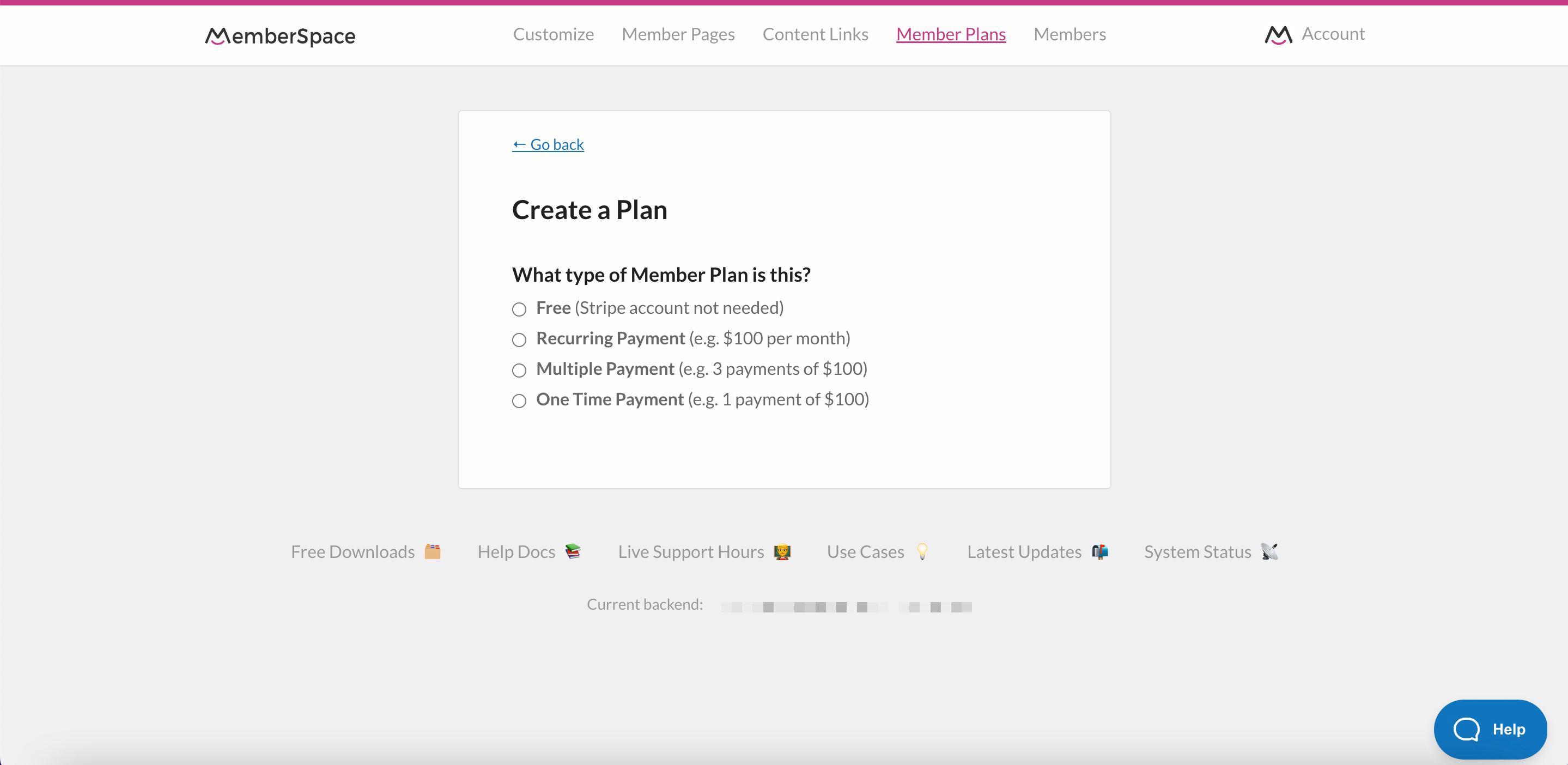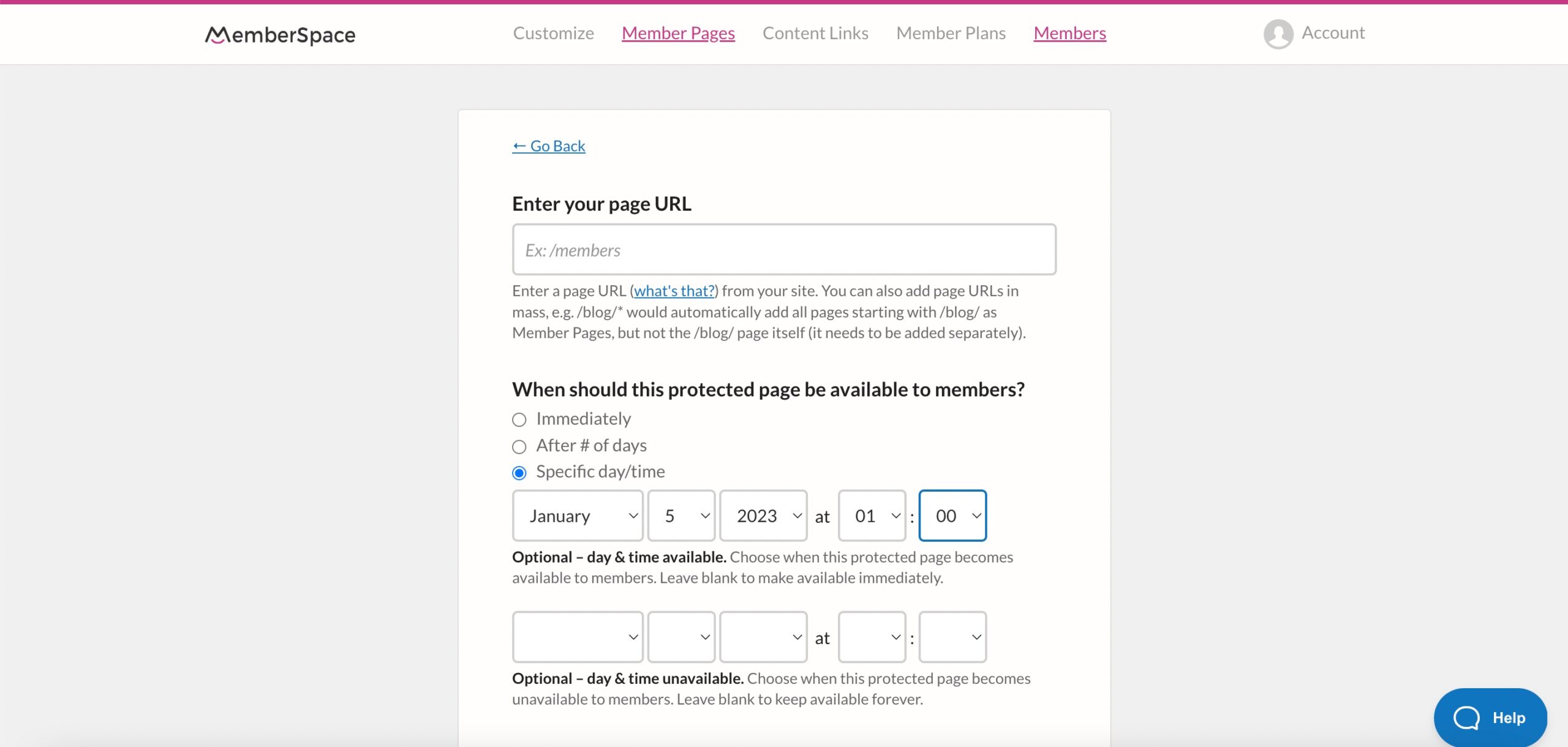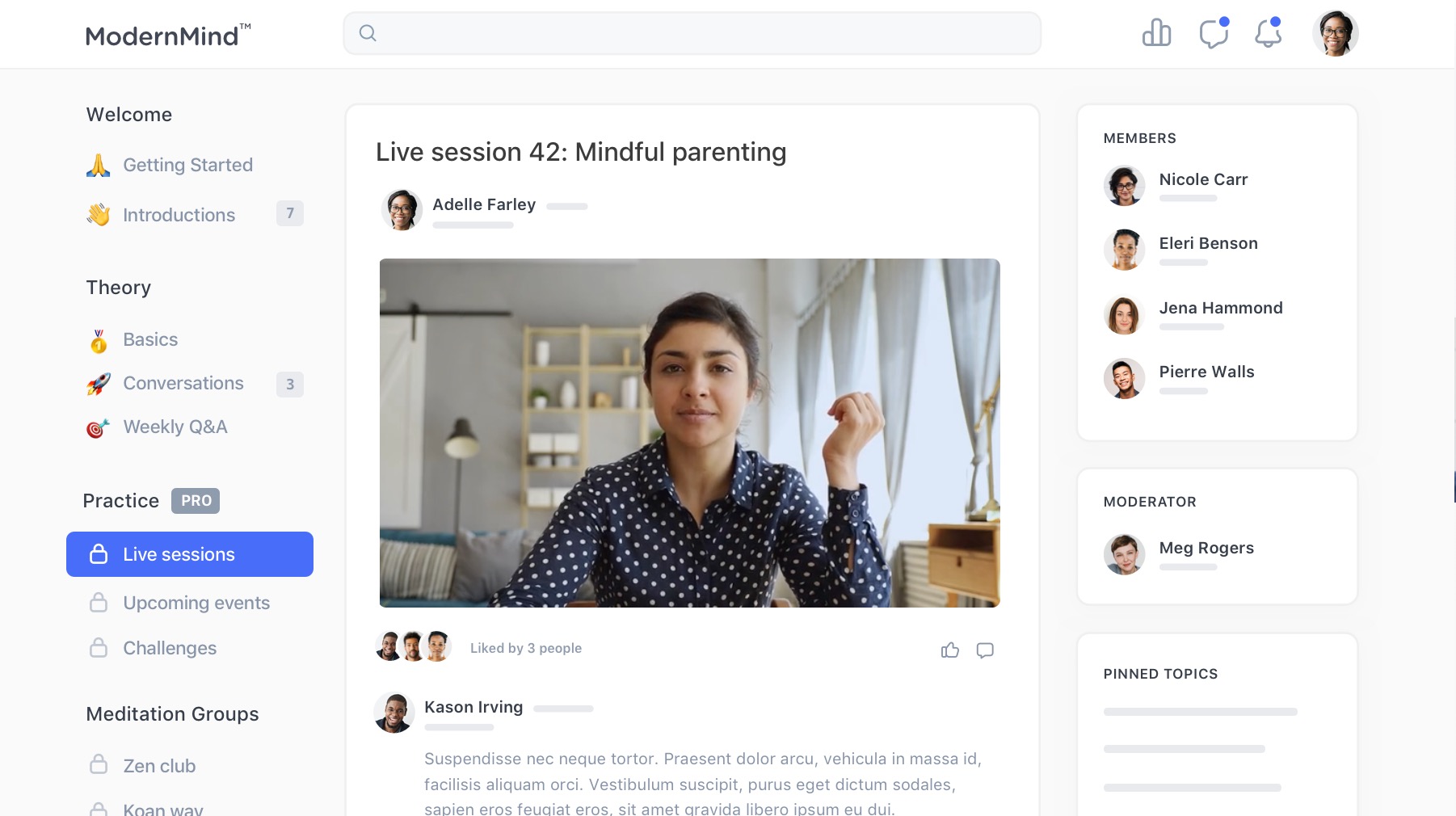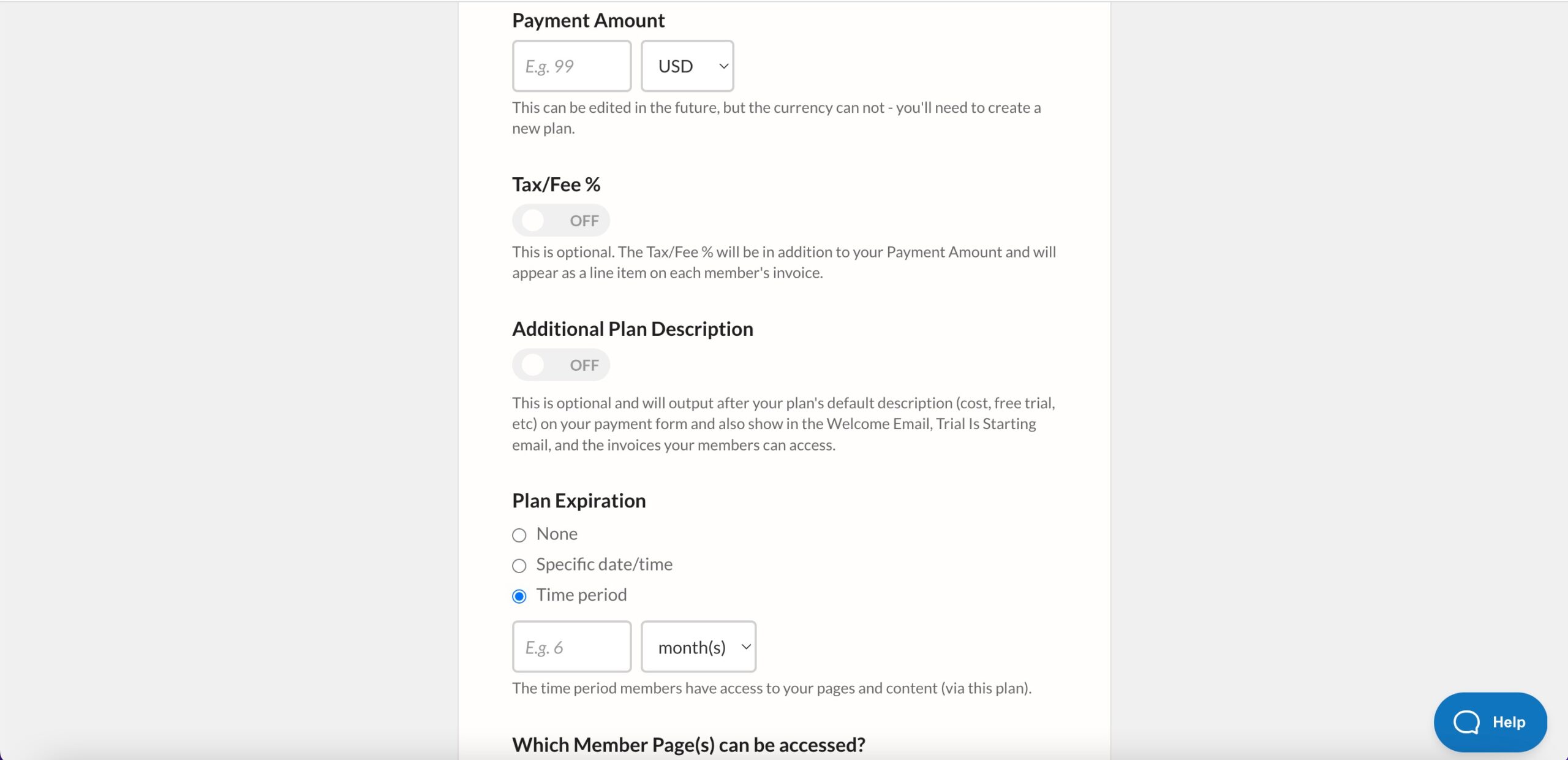You’re already sold on turning your site into a membership-based subscription service. You’re ready to develop a community, offer high-quality content, and start generating some serious revenue. But before you dive headfirst into your new business, you’ll have to make a critical decision: choosing a membership site model that’s best suited to your product or service.
The membership model you choose could effectively make or break your business, either encouraging members to turn into loyal, long-lasting (and high-paying) members or causing customer churn (that’s, unfortunately, all too common for subscription services).
So, how should you choose the best model for your business? What are your options? And how can you help ensure membership retention?
Below, we’ll cover the important things to consider when choosing a membership site model as well as a few common membership model options. We’ll also take a deeper look at how a membership platform like MemberSpace can help support your chosen model.
What do your members really want from you?
Before choosing a membership model for your site, you’ll want to consider the most important factor in this whole decision: the needs of your potential members.
Sure, a membership model is going to produce some major benefits for you — namely, a long-term source of revenue and increased exposure.
But just as with any business, the customer is king. Without considering what your members want from you, your model has the potential to belly-flop.
A membership model should:
- Meet the needs of your customers. Maybe you are offering a library of online resources for new entrepreneurs, fitness coaching for people who want to lose weight, or special access to product discounts. Regardless of what you offer, remember that you are there to meet the needs of your customers.
- Offer convenience. A membership model should be convenient. Your customers will likely pay more for their membership if your site is easily accessible and usable.
- Be consistent. Your membership model should be consistent with your brand. Don’t try to surprise members with messaging, products, or services that aren’t relevant to your image.
Keep these three factors in mind when choosing a model, and you’ll be set up to boost your retention rate, exceed the expectations of your customers, and build a sustainable model.
Membership site models: You’ve got options.
When it comes to choosing a membership model, you’ve got plenty of options. You may even want to “pick and choose” from different styles to create a model that works best for your product or service. In any case, here are several formats to consider:
1. All-Access
The first style of membership you may want to consider is “all-access.” In this approach, you give your members complete and instant access to all of your resources, products, or other offerings once they purchase a membership (with a flat fee or monthly payment).
The advantage of offering an all-access membership is the potential of attracting a larger customer base. With “everything on the table,” your offer may be more enticing, especially to customers who may be less than patient to gain access to your valuable library of resources, training videos, or products.
However, by offering everything all at once, you run the risk of generating customers who subscribe briefly, then drop off as soon as they’ve taken full advantage of your product or service.
A membership platform like MemberSpace enables you to turn your existing website into a membership site, making it possible to create an all-access model. You can protect as many different web pages and/or files (e.g. images, videos, PDFs, audio, etc.) as needed so they’re only available to members who join one of your membership plans.

With various plan types including free, one-time payment, multiple payment (i.e. installments), and recurring payment (i.e. subscriptions), you can choose exactly how much and how often members should pay to get access to your members-only content. And when a member joins a plan, you can grant immediate access to all protected pages and content.

2. Drip
Unlike an all-access model, a drip model “drips” out (i.e. slowly releases) content or resources to your members. For example, your members make a monthly payment to gain special access to fresh content that’s added each month, keeping them coming back for more.
Ideally, all new members are funneled into the same process of receiving new content in increments. For example, a member that joins in August will be funneled into the same process as a member who joined six months prior, in February. This helps alleviate the challenge of constantly creating fresh content, by recycling content again and again for incoming members.
Drip membership typically works well with a monthly fee, but you can choose whichever payment and drip interval you’d like (e.g. weekly, bi-weekly, monthly, etc.).
MemberSpace makes it easy to automatically drip out access to pages and content depending on when a member joins or on a specific day/at a specific time. You can choose to grant access X days after a member joins a plan, or you can decide when a specific page or piece of content should become available to all members at the same time.

3. Community
In a community-style membership model, your customers pay for access to a special online community. This community may involve a messaging platform, private forums, and networking groups.
Community-style membership is ideal for sites that already have a loyal following, and typically works well for audiences that have highly specialized or unique interests: Think freelance copywriting, Crossfit groups for women, or French film.
Starting a community-style membership is simple with MemberSpace and Circle. While Circle provides a community forum where your members can interact, MemberSpace takes care of protecting that space so it’s only available to those who have joined your membership.

4. Timed
A timed membership offers a fixed-length membership. For example, you may offer members six-week access to your library of resources or an online social media training course with an expiration date. In any case, there’s a cap on membership (and on payment).
The benefit of offering a timed membership course is that you may procure more sign-ups because there’s less commitment. The downside is that you’re less likely to create a long-term base of customers who make recurring payments (unless you create an additional product or service to upsell members).
MemberSpace makes it possible to have any or all of your membership plans automatically expire depending on when your members join a plan or on a specific day/at a specific time. For example, you could set a plan to expire 7 days after a member joins. Regardless of when the member joins, they would have access for 7 days before they would need to pay again for an additional 7 days of access. Or you could set access to expire on a pre-determined day for all of your members at the same time, regardless of when they join.

5. Course
Maybe you teach an online course on graphic design or meditative practice. Regardless of what you’re teaching via the internet, course membership may be offered in a variety of ways: drip membership, all-access, or a fixed time. Consider how your course content will best be delivered to your customer base, and decide on a model that will meet their learning needs (for example, you may want to offer a language course that’s dripped according to your users’ progress).
6. Product or Service
Perhaps you would like to use a membership model to offer a specific product. For example, your product may be a piece of protected content or a special download offered only by membership. In that case, you’ll want to upsell your members on an additional product or additional products once they have signed up to keep members returning again and again.
If it’s a service that you offer — such as access to a special tool or remote coaching — a membership model will also work well by offering members a package deal based on hours of usage.
7. Combo
If you’re the kind of person that’s creating an online membership site, you’re probably already pretty creative and accustomed to combining different elements to create a product or service that fits your specific vision.
That being the case, you may want to consider building a membership model that draws on different formats. For example, you may decide to drip fresh content to a community-style membership platform, giving long-term members access to a special online course. Or, you may want to upsell a fixed membership in yoga training into a long-term membership with open access to a digital resource library of yoga videos.
Where are your members headed?
As you make a decision about how to frame your membership model, consider where your members are headed. Why did they join? What are they looking for? What’s their end goal? Do they want to lose 10 lbs? Learn to speak Portuguese? Become better parents?
Choose a membership site model that will help your members successfully reach their end goals, and you can’t go wrong. They’ll be happy to shell out cash (again and again) for access to your content, product, course offerings, or quality services because those resources are helping them get to where they want to go.




